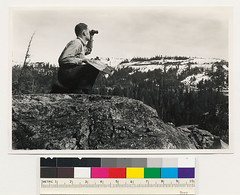Google Earth Maps Refugee Crises
/

Users must have downloaded Google Earth, UNHCR maps to access refugee information.
The maps will aid humanitarian operations as well as help inform the public about the millions who have fled their homes because of violence or hardship, according to the office of the U.N. High Commissioner for Refugees, which is working with Google on the project. "All of the things that we do for refugees in the refugee camps around the world will become more visible," U.N. Deputy High Commissioner for Refugees L. Craig Johnstone said at the launch in Geneva. Users can download Google Earth software to see satellite images of refugee hot spots such as Darfur, Iraq and Colombia. Information provided by the U.N. refugee agency explains where the refugees have come from and what problems they face. Although not all parts of the world are displayed at the same high resolution, the Mountain View, Calif.-based company has made an effort to allow users to zoom in closely on refugee camps. In the Djabal refugee camp in eastern Chad, which is home to refugees from the conflict in neighboring Darfur, Google Earth users can see individual tents clustered together amid a sparse landscape, and learn about the difficulty of providing water to some 15,000 people. Google says more than 350 million people have already downloaded Google Earth. The software was launched three years ago and originally intended for highly realistic video games, but its use by rescuers during Hurricane Katrina led the company to reach out to governments and nonprofit organizations. Google Earth has since teamed up with dozens of nonprofit groups seeking to raise awareness, recruit volunteers and encourage donations. Among them are the U.S. Holocaust Memorial Museum, the U.N. Environmental Program and the Jane Goodall Institute. "Google wants to organize the world's information and make it universally accessible and useful," said Samuel Widmann, the head of Google Earth Europe. The company estimates that 80 percent of the world's information can be plotted on a map in some way. Rebecca Moore, who heads the Google Earth Outreach program for nonprofit groups, said the company does not control the information published using the software. Google is considering offering a stand-alone version of its mapping software that can be used by aid workers in the field who do not have an Internet connection on hand, she said. Google said it will also provide nonprofit groups in several countries with training and free copies of its $400 professional mapping software, an offer it plans to roll out across the globe over time. http://www.cnn.com/2008/TECH/04/08/google.refugees.ap/index.html



 I was in disbelief when I was first told about this little gadget because it is such a small wireless device. I haven't tried it myself, but it would be pretty cool that I don't need to worry about the upload process. I imagine that when the location coordinates are stamped into EXIF information of the pictures, uploading and geocoding pictures on Flickr, Picasa, or other map-based photo services will be so easy.
I was in disbelief when I was first told about this little gadget because it is such a small wireless device. I haven't tried it myself, but it would be pretty cool that I don't need to worry about the upload process. I imagine that when the location coordinates are stamped into EXIF information of the pictures, uploading and geocoding pictures on Flickr, Picasa, or other map-based photo services will be so easy.